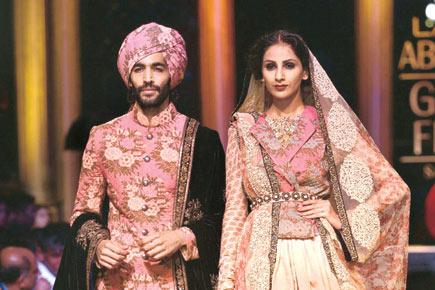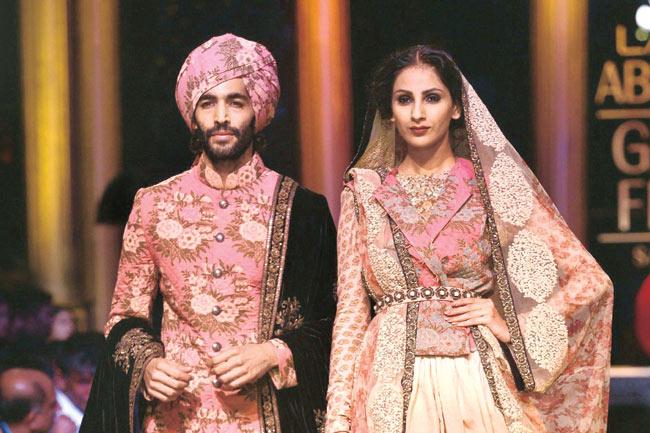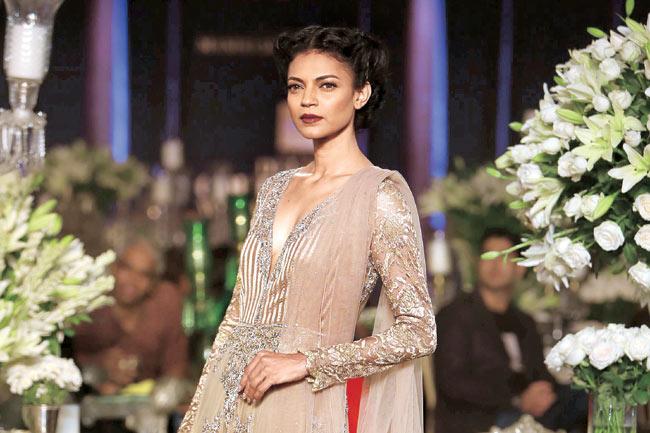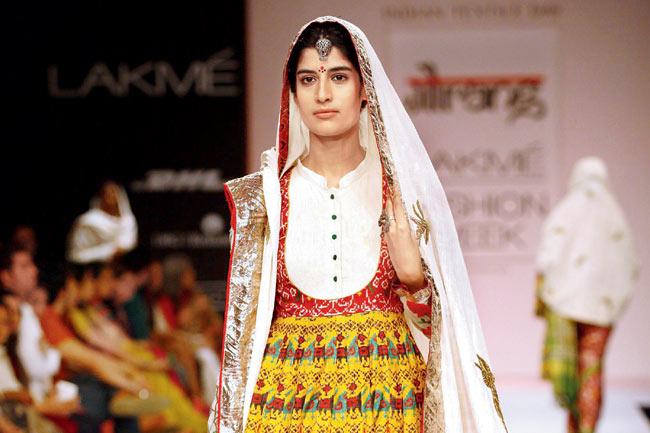March will witness two fashion weeks in Mumbai and Delhi. A dozen fashion weeks are expected later this year. But who follows these fashion forecasts? Meher Castelino talks to designers and forecasters

The big debate
Hundreds of fashion-forecasting companies make a living providing seasonal predictions. Designers swear by names such as WGSN, Promostyl, Pantone and MPD Click. But while there are umpteen forecasts in the West, India has to largely follow what foreign firms predict.
After each fashion week, the media moves into top gear tracing the trends that were seen on the ramp, but with a billion-plus population, there are still no real indigenous forecasts to follow.
ADVERTISEMENT

Models in Sabyasachi Mukherjee’s creations
Fashionably different
India is a large country with diverse fashion needs from state to state so a single fashion forecast can be a futile exercise. What Northern India likes to wear the South won’t touch. While the West of India may be fashionable, the East is a little conservative with tradition being favoured. So are there any universal guidelines for Indian designers to follow when they create collections for fashion weeks? Or do our designers create what they are good at and ignore fashion week themes and forecasts altogether? A spring/summer season has heavy bridal wear and autumn/winter reveals cute sheer minis on the ramp. The only fashion weeks that seem to stick to forecasts are for bridal couture where designers faithfully follow the theme of the event. No doubt, industry reactions are divided on fashion forecasts.

We do need some education
Manish Keshikar, director and chief creative officer at DSGN Fashions, says in his several years of observing the Indian fashion scene from up close, he has seen the lack of fashion education as a big hindrance. “Unfortunately none of our institutes teach how to ‘create’ fashion forecasts, they only teach students to ‘follow’ forecasts. All our designers have also accepted the fact that design creativity in fashion is always the ownership of western designers. Indian designers must recreate their own forecasts instead of referring to international forecasts,” he says.
Designer-speak
Designer Aniket Satam says, “One cannot altogether ignore international forecasts and runway trends. I follow Pantone forecasts for prime colour selection along with Color Solutions International (CSI) colour report. For silhouette direction and style trends, Promostyl is fantastic while WGSN works best for print and pattern directions. In a globally connected scenario everything clubs into an international mass trend with slight local adaptation. But India has diverse cultural, sociological structures, sedimentary economy and varied climatic conditions. So to predict a homogenous forecast here is tedious.”

A model sports traditional Indian attire designed by Gaurang Shah at the 2013 Lakme Fashion Week
The buyers’ crystal ball
Falguni Jhaveri of Fuel Fashion Store is a regular buyer at fashion weeks. She feels buyers too give insights to designers. “We have a forecast in our mind for a particular season. When we think pastels will be big, we ask designers to work around that. There are international forecasts available to buyers but we don’t follow them blindly, as they don’t work for Indian wear. Indian garments are not that seasonal. Bridal wear is sold throughout the year for instance,” she adds.
The forecaster’s story
It is not that India does not have good fashion forecasters though. Harlene Sabarwal, for one, has been doing fashion forecasting for several years now. “Most designers copy fashion forecasters such as WGSN blindly in terms of styling. Since Indian seasons differ from European ones, these forecasts often do not work for India. But then how many designers even keep the Indian consumer in mind while designing? One needs a five-year financial reserve to create Indian fashion forecasts. It involves a lot of research as we live in a diverse country,” says Sabarwal.
Advantage men
Strangely, while fashion forecasts for women’s wear may not have many takers in India, men’s wear has benefitted in the ready-to-wear branded section and the high-fashion designer category. Colours seem to have invaded men’s wear like never before with designers such as Troy Costa, Ken Ferns, Sanjay Hingu and Narendra Kumar Ahmed giving a thumbs up to all the colours of the rainbow for suits and shirts. On the ethnicwear front, Indian men remain safe in sherwanis, kurtas, bundgalas and Jodhpuri jackets that have been around for several decades. No fashion forecasts here.
Watch out for
This year, men will be keen to follow the unconventional styling sported by Jonny Lee Miller who plays Sherlock Holmes in the TV series Elementary. It has caused a sensation worldwide and in India. Holmes wears small collars buttoned up or down, rounded and in contrasting white. Dark hues give the 21st century New York-based British sleuth a kitschy grungy look that matches his whimsical character. The buttoned-up shirts minus a necktie may set a trend.
 Subscribe today by clicking the link and stay updated with the latest news!" Click here!
Subscribe today by clicking the link and stay updated with the latest news!" Click here!







